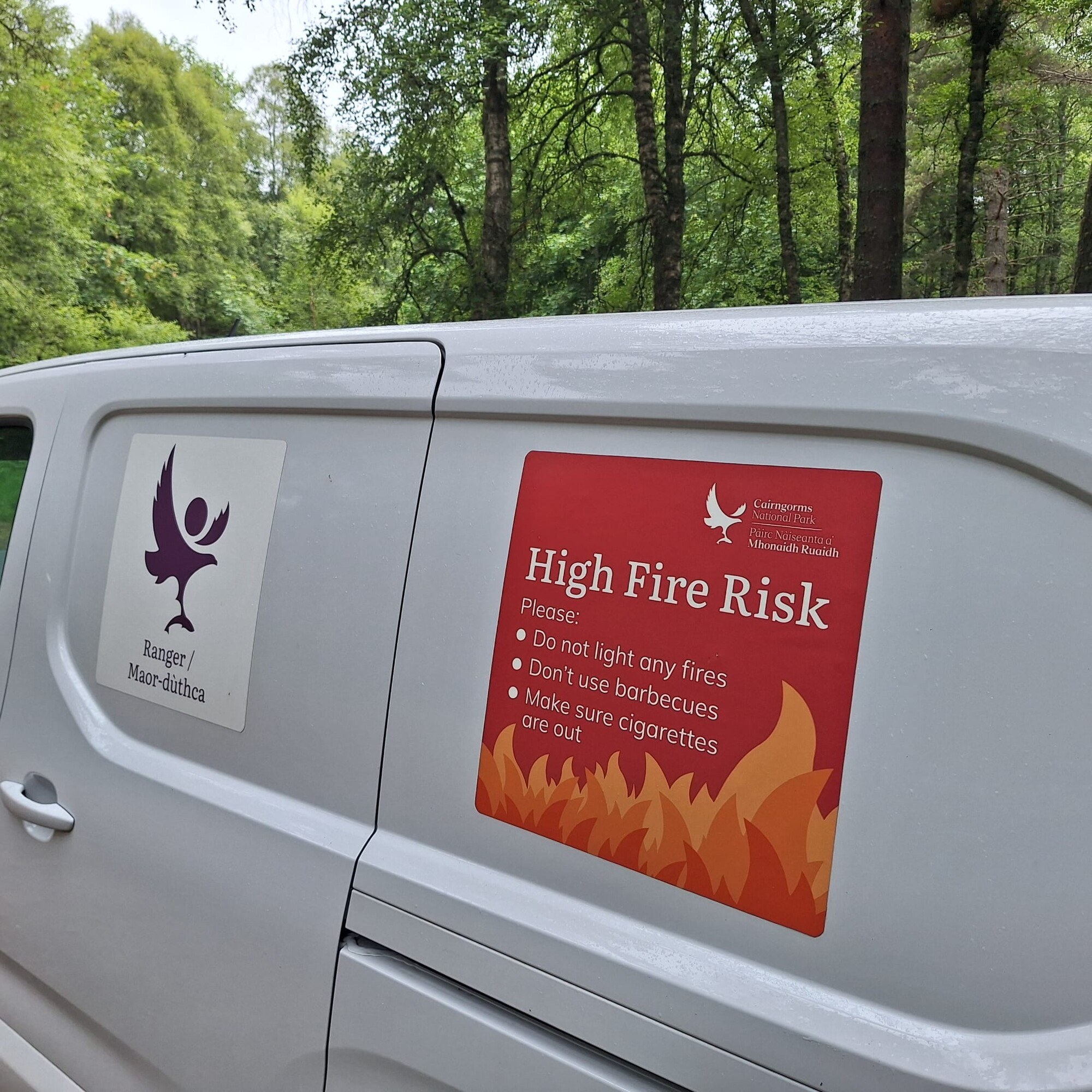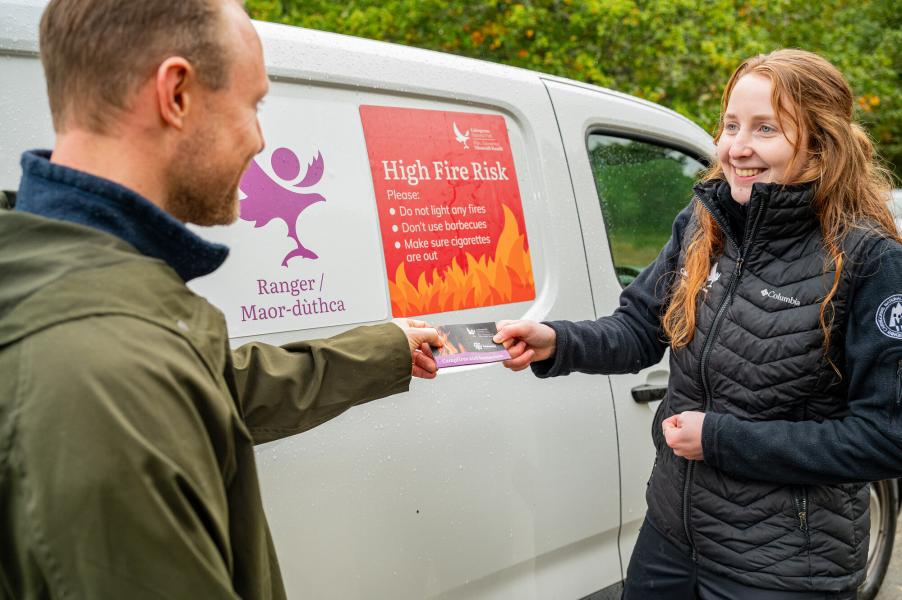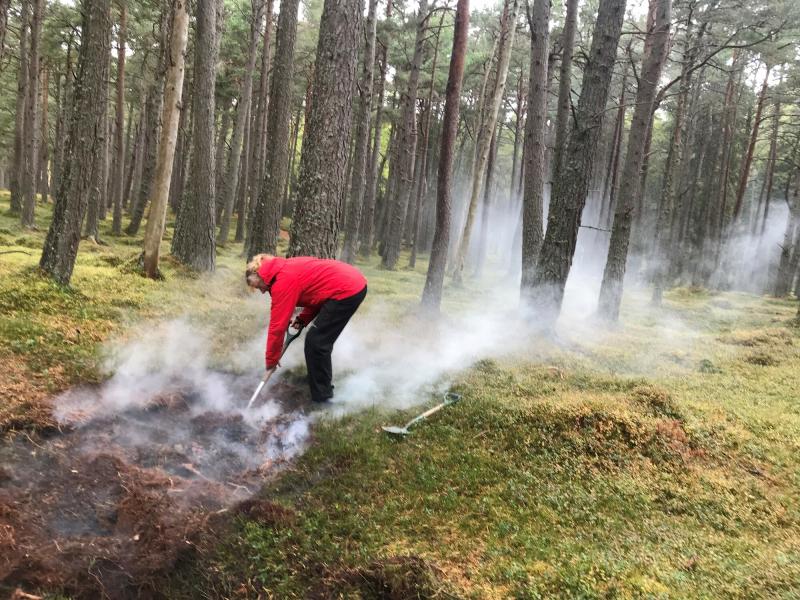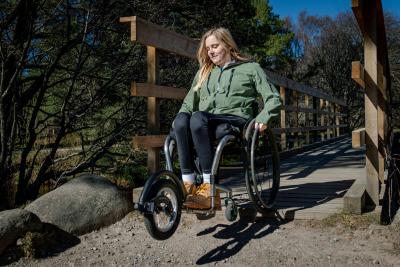Wildfire management

As the climate changes, the risk of wildfires is ever more present in our daily lives. In a National Park that is home to vibrant communities, rare habitats, complex ecosystems and a quarter of the UKs rare and endangered wildlife, we know a wildfire has the potential to be devastating.
Wildfire prevention and mitigation is an important part of our work in protecting the National Park, ensuring that the people who live here are protected from harm, and that the spectacular landscapes, and the wildlife that depends on them, are taken care of for future generations.
There are many strands of this work, all of which rely on close collaboration with landowners and partners across the National Park, as well as extensive public engagement. Significantly in 2025, after extensive consultation and stakeholder input, the Park Authority submitted plans for a seasonal fire byelaw in the National Park. These plans were approved on 25 September 2025 by Mairi Gougeon MSP, Cabinet Secretary for Rural Affairs, Land Reform and Islands.
Introducing a recreational fire byelaw
On 25 September 2025, a recreational fire byelaw for the Cairngorms National Park was approved by Scottish Government. This means that recreational fires and barbecues will be banned in the National Park between 1 April and 30 September every year. As you will see from the section below, the ban follows an extensive period of public consultation, during which residents and visitors to the National Park expressed strong support for these measures.
In preparation for the byelaw coming into force next April, the Park Authority and its partners are taking forward a range of measures. These include:
- Enforcement and training - working with Police Scotland and the Scottish Fire and Rescue Service to prepare for robust enforcement of the byelaw, including enhanced patrols at key sites and an extensive training programme for rangers on the ground.
- Wildfire communications campaign - developing a targeted wildfire communications campaign, including permanent and temporary signage, leaflets, press activity and social media advertising.
- Signage at key locations - working with local councils to put in place road signs at key entrance points and hotspots, informing people that there are no fires or barbecues allowed.
- Working with partners - coordinating activity across estates, public bodies, NGOs, businesses and communities in the National Park to ensure a joined-up approach to information sharing on fire risk, the upcoming byelaw and the Scottish Outdoor Access Code.
Whilst the introduction of a byelaw is just one additional tool in the box, it will allow the Park Authority to progress a range of significant wildfire mitigation measures, alongside the UK’s first Integrated Wildfire Management Plan. We will be keeping members of the public up to date on the progress of this activity over the coming months.
Fire byelaw - the story so far
In 2024 the Park Authority consulted on the potential introduction of a recreational fire byelaw, which would make it an offence to light a fire or barbeque within the National Park at certain times of year. Over 1,600 people took part in the consultation, with 79% supporting the introduction of a byelaw, 16% against and 5% unsure. The Park Authority did not express a preference during this consultation, but the results gave the Park Authority a mandate for change. You can read a summary of the consultation results here.
Drawing on feedback from the general public, landowners and partners, the Park Authority board agreed on 28 June 2024 to develop a seasonal fire management byelaw, which would last from 1 April to 30 September each year. This decision was based on feedback from the consultation, which suggested that the approach should be easy to communicate, not perceived as heavy-handed and cover the period with the greatest risk.
As required by the legislation, a further public consultation on the draft wording of the byelaw was carried out from 23 September to 16 December 2024. A total of 109 responses were received from a mix of residents, visitors, land managers and partners. Written responses were received from a further 10 individuals or organisations, and direct discussions were held with Police Scotland, the Scottish Fire and Rescue Service and the Scottish Wildfire Forum. You can read a summary of these responses here.
In response to a couple of the suggestions made in these consultation responses – and following discussions with Police Scotland and the advice of the Park Authority’s legal advisers – the proposed wording was subtly adjusted and signed off by the board on 14 February 2025. This wording, together with supplementary evidence, was submitted to Scottish Government in March 2025 and members of the public were given until Sunday 18 May to comment or object to the proposal.
Having fully considered the proposals, including the two objections submitted, Marie Gougeon MSP - Cabinet Secretary for Rural Affairs, Land Reform and Islands - approved the byelaw on 25 September 2025.
In 2024 the Park Authority consulted on the potential introduction of a recreational fire byelaw, which would make it an offence to light a fire or barbeque within the National Park at certain times of year. Over 1,600 people took part in the consultation, with 79% supporting the introduction of a byelaw, 16% against and 5% unsure. The Park Authority did not express a preference during this consultation, but the results gave the Park Authority a mandate for change. You can read a summary of the consultation results here.
Drawing on feedback from the general public, landowners and partners, the Park Authority board agreed on 28 June 2024 to develop a seasonal fire management byelaw, which would last from 1 April to 30 September each year. This decision was based on feedback from the consultation, which suggested that the approach should be easy to communicate, not perceived as heavy-handed and cover the period with the greatest risk.
As required by the legislation, a further public consultation on the draft wording of the byelaw was carried out from 23 September to 16 December 2024. A total of 109 responses were received from a mix of residents, visitors, land managers and partners. Written responses were received from a further 10 individuals or organisations, and direct discussions were held with Police Scotland, the Scottish Fire and Rescue Service and the Scottish Wildfire Forum. You can read a summary of these responses here.
In response to a couple of the suggestions made in these consultation responses – and following discussions with Police Scotland and the advice of the Park Authority’s legal advisers – the proposed wording was subtly adjusted and signed off by the board on 14 February 2025. This wording, together with supplementary evidence, was submitted to Scottish Government in March 2025 and members of the public were given until Sunday 18 May to comment or object to the proposal.
Having fully considered the proposals, including the two objections submitted, Marie Gougeon MSP - Cabinet Secretary for Rural Affairs, Land Reform and Islands - approved the byelaw on 25 September 2025.
Risk reduction, visitor engagement and communications
A significant part of our work to prevent wildfires is delivered through our ranger service who patrol the National Park daily, engaging with people and providing helpful information and resources on responsible access. During the 2024 season alone they engaged with 6829 people and dealt with and removed 783 fire sites.
In addition to direct delivery, the Park Authority funds partner ranger services in the National Park, putting boots on the ground to be able to make a difference in communities across the Cairngorms. In the past few years, we've funded additional police patrols in high-risk areas, ensuring a swift response to fire setting and other anti-social behaviours.
Collaboration on this issue is key, which is why we've coordinated communications on the issues with the Scottish Government, VisitScotland and other local and National Partners, developing an alerts system for social media to disseminate further information to the public in times of fire risk. We host fortnightly Managing for Visitors meetings throughout the summer season to respond to emerging trends or issues and meet monthly in winter to coordinate planning for the season ahead with our partner agencies and landowners.
Planning and preparedness
Our work in this area is not limited to prevention, and our land management team works closely with landowners, managers and workers across the Cairngorms to ensure we are as prepared as possible in the event of a wildfire.
Future projections indicate that the National Park will experience further warming over the coming decades, resulting in an increasing number of dry days and number of consecutive dry days, during summer months.
The Integrated Wildfire Management Plan – the first of its kind in the UK – aims to provide support and guidance for land managers in the National Park to reduce the risk of fires, be better prepared to tackle wildfires and to make the landscape more resilient. Containing a number of recommendations and actions, the plan was approved by the Park Authority Board in June 2025.
In addition to the plan our Climate Adaptation Fund has awarded money for fire-fighting equipment and training on land in the Cairngorms, providing the practical tools and skills necessary to respond to the increasing risk of wildfires in the National Park.
Download a template wildfire risk assessment | Download a template estate fire plan
-
Date
On going
-
Partnership plan objectives
-
Partners















